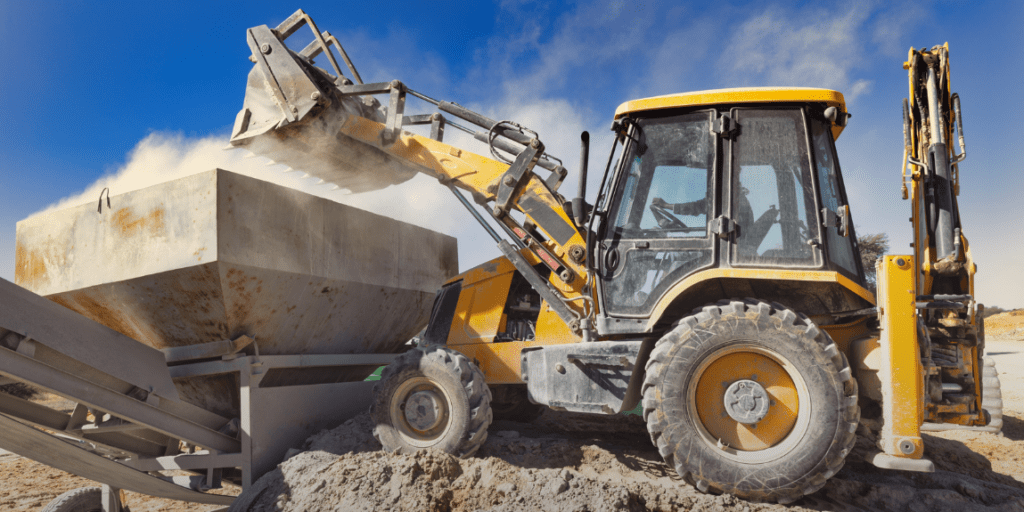

It’s not difficult to make the case for tracking a big piece of heavy equipment. Take a giant excavator as an example and if it’s state of the art, you’re likely to spend something in excess of USD0.5 million. Depending on brand and spec, outlay for even a mini excavator would be unlikely to see much change out of USD100,000.
It stands to reason then that if you’re going to fork out those kind of sums for a machine like this, you’re going to protect it for a relatively small cost with IoT devices. These are after all machines that would cost a fortune to replace and which would fetch a considerable price for those intrepid enough to risk the law.
And, it seems, there are plenty willing to take that chance. According to the National Equipment Register, thefts of big construction equipment in the US in the Fall of 2023 were “well on pace” to eclipse the national average of 10-11,000 thefts a year, as reported by Construction Briefing. With the average loss at USD35-45,000 per piece of equipment and recovery rates at around 21-22%, according to the NER, the long-term impact on projects, budgets and deadlines barely needs to be spelled out.
But it’s not uncommon for companies to put a cap on which pieces of equipment they will track with what is often an arbitrarily applied sum. If, for example, a given company’s cut-off point is USD20,000, then that automatically means a lot of the critical mid-range equipment that play a vital role in the logistical flow of any given project both within and between sites would fall foul of such a stipulation.
Take a trailer, for example. The question a site manager might ask could be the following: If an excavator’s worth tracking, why wouldn’t you track a trailer? While it wouldn’t be unreasonable to assume a trailer isn’t high on a thief’s wish list, there are other reasons to have data to hand and in front of you when you need it.
‘Anyone who has worked in construction for a while will nod sagely and will also recognize that the aggregated affect of such incidents all help to create project overruns, budget rises and a general downtime cost.’
Let’s say you’re managing a complex project with multiple sites and terrain which requires frequent redeployment of resources including heavy equipment to different points and for that deployment to happen in as seamless a manner as possible.

Well, you will of course know where your giant excavator is given the location will come up immediately on your device (and let’s face it, an excavator is hard to miss), but what do you do if some of your trailers have suddenly gone missing? And what if the delay in finding those missing trailers leads to a delay of two, four or maybe even more hours while you and your teams spend time tracking down the trailer you thought was on one site, but has ended up elsewhere?
Or what if the trailer is where a site manager or machine operator wanted it to be but needs a service? If that means it has to be sent for repair because data which could have shown the project manager that trailer required maintenance wasn’t available, then the impact on deadlines and/or costs becomes obvious.
These scenarios I’ve depicted are crude but not in anyway unprecedented. In fact, anyone who has worked in construction for a while will nod sagely and will also recognize that the aggregated affect of such incidents all help to create project overruns, budget rises and a general downtime cost to the whole construction paradigm that adds up to a massive cost over time.
In essence, this is a process argument. A carpenter wouldn’t turn up to the job without her pencil and tape measure in hand and if she did, her client would take something of a dim view if it meant a delay in getting the job done.
This is because it is impossible to look at any job or piece of equipment and assume that one is more important than the other. Instead, it’s all about creating the flow and process and making sure that come 8am every morning, everything is in place — or is as much in place as is possible — to ensure operations can commence as near as planned as can be.

That’s not something that should be trusted to luck and a hopeful hunch. The technology to fully connect that middle layer of equipment is absolutely there already at a cost that is no longer prohibitive and by definition, should help mitigate against costly delays.
I also believe this is about to change. In fact, we’ve seen it change. For example, Herc Rentals COO Aaron Birnbaum told Trackunit Next in 2023 that, for nearly two years, the company had “been going through a digital transformation, working with a team of technology, sales, and operations experts, as well as external software consultants,” as part of its plan to roll out its ProControl NextGen™ digital fleet management platform. According to Birnbaum, it would “empower customers to better manage their fleet on rent through rich data made available in an easy-to-use, mobile-enabled format across the equipment rental cycle.”
In effect, Herc, a USD3.3 billion/year rental player on the North American market, recognized that while it made perfect sense to have highly sophisticated IoT devices on its bigger equipment items, the whole rationale could be undermined by ignoring the middle layer. And that missing piece of the jigsaw has now effectively been bridged by Herc via Pro Control NextGen.
There is a safety narrative here too that I have so far not touched on. With the IoT devices in place at the heavy equipment side come protocols and guidelines that help mitigate risk of what, in the wrong hands, can be dangerous machinery. It’s not unknown for big contractors to halt projects after a jobsite incident and embark on a massive safety-training initiative to mitigate against such incidents reoccurring, rightly disregarding the impact on budgets and deadlines.
‘The technology to fully connect that middle layer of equipment is absolutely there already at a cost that is no longer prohibitive and by definition, should help mitigate against costly delays.’
That safety ‘pull’ on the middle layer is also to some extent reinforced by a ‘push’ from the non-powered segment of the equipment paradigm where technological advancements have helped make the financial cost of tracking such tools relatively cheap. Some hand-held tools are by their very nature hazardous and while people outside the industry might associate on-site risk with bigger machinery, most injuries on construction job sites are caused by misuse of hand-held tools.
There is therefore every chance that we will also see digitization also creep up towards trailers and other middle layer equipment like generators and HVAC-related machines because of a relentless focus on safety on the use of such tools providing a significant part of the imperative.

As this two-way impact on the middle layer develops, it will be no surprise if this moves quickly. With connectivity perhaps at no more than 10% through this segment, it needs to. And when it does, we will be well on the way to realizing the connectivity goal that is at the heart of every effort to make construction once again into a more progressive industry while making your business work in a much more efficient, money-making manner.
So do we muddle on as we are? Or do we break down the silos and let connectivity flood the ecosystem? The case for the latter is powerful. And it will only become even more powerful — indeed inevitable — in the next few years. Don’t get left behind.
Never miss an insight. We’ll email you when new articles are published on this topic.